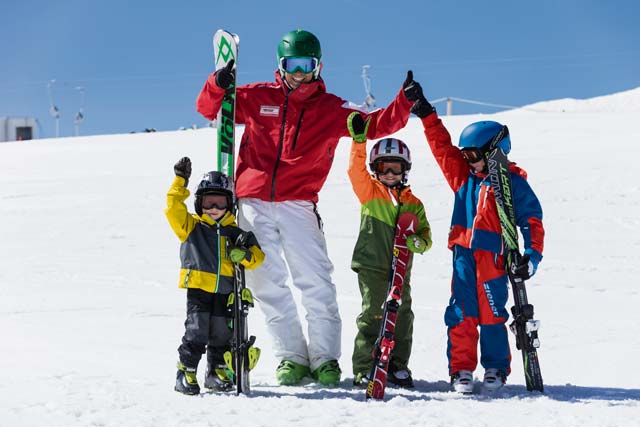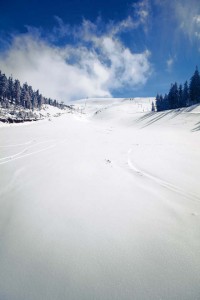
Most ski schools offer age-specify classes for children.
This winter, go back to school — ski school!
Wintertime is an amazing time of year, especially if you know how to ski. But, if you don’t, there’s no better place to learn how than in an organized class.
So, what should you expect from ski school?
On the first day, you will usually learn to become familiar with the equipment. It has become customary to rent equipment from specialized companies for the whole season, but daily or weekly rentals are optional, too. Buying your own equipment can be very costly and only worth it for those skiing regularly.
Next, you’ll learn the basics, such as how to form your skis when you want to make a slow descent and how to break or stop safely.
Once you’ve conquered the basics, instructors will take you on a field trip to simple pistes and teach you how to improve your posture, speed and movement control.
Pistes are categorized according to their degree of steepness. The German and Austrian trail difficulty ratings range from blue for beginners, red for advanced and black for experts. Simple training pistes are sometimes marked green.
Most ski schools offer age-specific classes for children with some starting as early as the age of 2.

“Skitty World” is a project by the German Ski Association (DSV) designed for children who have never been on skis before. Skitty World is designed to take children with little to no experience right up the lifts and down their first slopes. It consists of four areas with 10 different stations.
No matter if you are an adult or a minor, there’s a school for you. The easiest way to find the school for you is to check out the offers at Kaiserslautern Outdoor Recreation. Outdoor Recreation hosts a weekly glacier skiing trip every Saturday and snowboard lessons at an indoor skiing facility every Sunday. Outdoor Recreation offers packages including equipment, lessons and entry fees. For more information, call Kaiserslautern Outdoor Recreation, Bldg. 2905 on Pulaski Barracks, at (314) 493-4117 or 06313-406-4117.
Another option is to travel to one of Germany’s skiing regions and enroll right there. Many hotels offer packages that include lessons and ski-lift passes. Three hours south of Kaiserslautern is the Feldberg Mountain in the Black Forest — one of the prime locations for skiing. The Ski School Thoma at the Feldberg in the Black Forest offers specific programs for different ages. For more information, visit www.thoma-skischule.de/en.
In the Sauerland region, two hours north of Frankfurt, the Wintersport Arena Sauerland has a wide range of programs, from Tobogganing to cross-country skiing.
If you want to go all the way to the top, the Skischule Zugspitze-Grainau offers training at Germany’s highest mountain, the Zugspitze. For details, visit www.skischule-zugspitze.de/en. Organizations like these usually take care of all the skier’s needs, from equipment rentals to hotel packages.
So, what’s there to worry about then? Patricia Finster from the DSV recommends looking for ski schools with qualified teachers.
“Our trainers have to go through a lot of training. In order to get a license, they need to take a 120-unit course in which they learn how to minimize risks, how to deal with different people and situations, and modern scientific movement findings,” Finster said. “And, of course, first aid training. So, if you want to be on the safe side, look for the DSV logo.”
The DSV has about 35,000 certified instructors. Check out www.deutscherskiverband.de/liste_skischulen_de,58926.html for a map of ski schools in your area.







